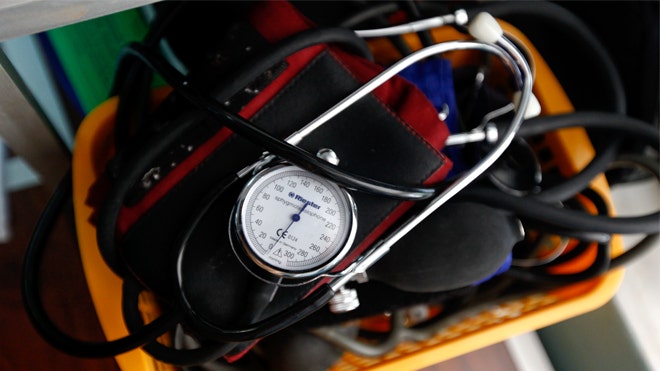
Hypertension on the high? Here are top 10 tips to get it down and keep it down.
Seven in 10 adults are at a greater risk of stroke or heart attack because their blood pressure is too high. Desk jobs, lack of exercise and eating salty fast foods have contributed to the problem, even among the young. If your level is consistently at or above 140mmHg/ 90mmHg (referred to as 140 over 90). The 140 figure is the systolic pressure — the pressure reached when the heart forces the blood around the body — and 90 is the diastolic pressure — the lowest pressure that occurs between heartbeats when the heart relaxes.
In India, experts say, the prevalence of hypertension ranges from 20-40 per cent in urban adults and 12-17 per cent among rural adults. But there’s no reason to worry. Simple measures will help to cut your risk.
1. Go for a weekly jog
Jogging for just an hour a week can increase your life expectancy by six years, according to a Copenhagen City Heart cardiovascular study of around 20,000 men and women aged from 20 to 93.
Researchers believe jogging delivers multiple health benefits, improving oxygen uptake and lowering blood pressure, as well as many more benefits. However, any physical activity can help lower blood pressure by strengthening the heart so it can pump more blood with less effort, thereby decreasing the force on the arteries. Power walking can be just as effective as jogging.
2. Enjoy yoghurt
Just one small pot a day can reduce your chances of developing high blood pressure by a third, according to a study presented at the University of Minnesota in the US. Scientists think naturally occurring calcium can make blood vessels more supple, enabling them to expand slightly and keep pressure low.
They found those who ate a 120g pot daily were 31 per cent less likely to develop high blood pressure over a 15-year period than those who did not.
3. Go bananas
Eating potassium-rich foods, such as bananas, and reducing salt intake could save thousands of lives every year, according to a new study published in the British Medical Journal online.
Potassium is an important mineral that controls the balance of fluids in the body and helps to lower blood pressure. Making sure you eat five.
4. Down with salt
Salt draws in fluid, raising the volume and pressure of blood in your arteries. But it’s not just the salt cellar you have to worry about — processed foods such as biscuits, breakfast cereals, takeaways and ready meals contain 80 per cent of the salt we consume, says the Blood Pressure Association. Check labels: more than 1.5g salt per 100g is a lot, but less than 0.3mg per 100g is a little.
5. Lose weight
Research has shown that dropping just a few kilos can have a substantial impact on your blood pressure. Excess weight makes your heart work harder and this strain can lead to high blood pressure.
6. Don’t smoke
The nicotine in cigarettes stimulates your body to produce adrenaline, making your heart beat faster and raises your blood pressure, making your heart work harder.
7. Work less
Regularly putting in 40 hours per week at the office raises your risk of hypertension by 14 per cent, the University of California, US, found.The risk rises with overtime. Compared with those who worked fewer than 40 hours a week, workers who clocked up more than 51 hours were 29 per cent more likely to have high blood pressure. Overtime makes it hard to exercise and eat healthily, say researchers. So try to down tools with enough time to relax in the evening and eat a healthy supper. Set a message on your computer as a reminder to go home.
8. Seek help for snoring
Loud, incessant snoring is a symptom of obstructive sleep apnea. And more than half of those with this have blood pressure significantly higher than expected for their age and general health.
Cutting out cigarettes and alcohol and losing weight will help.
9. Switch to decaf
Duke University Medical Center, North Carolina, US, found caffeine consumption of 500mg, roughly three cups, increased blood pressure by three points. Effects lasted until bedtime.
Scientists say that caffeine can raise blood pressure by tightening blood vessels and magnifying the effects of stress.
10. Think beetroot
A study published in the journal Hypertension found drink ing a 250ml cup of the juice can cut blood pressure readings in those with high blood pressure by around seven per cent. It’s thought the effect is produced by beetroot’s naturally high levels of nitrate. Eating other-rich foods — cab bage and spinach — might also help
Source: Viral news chart



 A team of researcher including an Indian origin has suggested that 15 percent of the most common type of strokes occur in adolescents and young adults, and more young people are showing risk factors for such strokes.
A team of researcher including an Indian origin has suggested that 15 percent of the most common type of strokes occur in adolescents and young adults, and more young people are showing risk factors for such strokes.